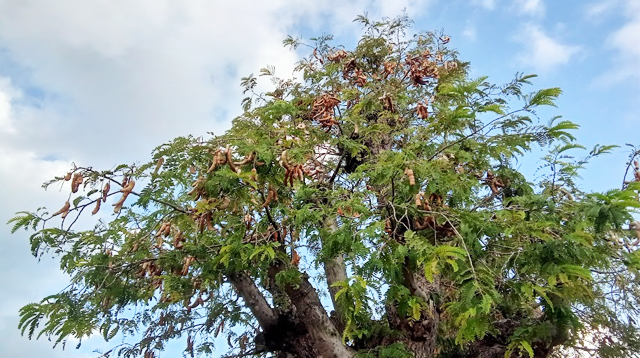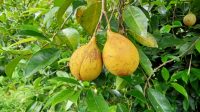WHO doesn’t know the tamarind tree? Its shady tree is always sought after during the scorching heat. But did you know that its fruit also has a multitude of benefits? Processed into sour candy, fruit salad sauce, or as a cooking spice, all are equally delicious.
The tamarind tree (Tamarindus indica) is a tropical plant known for its fruit that has a distinctive sour taste. Not only is it useful culinary, this tree also has aesthetic and functional value that makes it an attraction in the world of tourism. Here is a review of the habitat of the tamarind tree, the benefits of its fruit, and its charm as part of the tourist landscape.
Suitable Habitat for Tamarind Trees
Tamarind trees thrive in tropical and subtropical climates with sufficient rainfall and abundant sunlight. This tree can be found in various regions such as Southeast Asia, India, and Africa. The soil that is suitable for growing tamarind trees is sandy loam soil that has good drainage. This tree is also resistant to drought, making it an ideal choice for areas with long dry seasons.
Benefits of Tamarind for Culinary
Tamarind has a unique taste that is often used in various food and beverage preparations. Some of the culinary benefits of tamarind include:
Candy – The refreshing sour taste makes this fruit the main ingredient in making sour candy which is popular in various countries. Sour candy has a distinctive taste, sweet and sour at the same time, so it is popular with tourists.
Fruit Salad Sauce – In Indonesia, tamarind is often used as the main ingredient in making rujak sauce. The combination of sour, sweet, and spicy flavors of rujak sauce creates an appetizing taste, attracting the attention of culinary tourists.
Complementary Seasoning – Tamarind is widely used in various Asian specialties, such as soto (clear soup), sour vegetables, and rendang. Its presence as a natural spice makes it an important part of local culinary tourism.
Tamarind Tree as a Shade Tree and Landscape Beautifier
Tamarind has a wide and shady canopy, so it is often planted along roads or tourist areas as a shade tree. The beauty of the large tree shape with small leaves creates a shady and comfortable atmosphere for visitors. Not only that, tamarind trees are also often used as decorative elements in city parks, rest areas, and natural tourist locations to add to the appeal of the landscape.
Tourist Attractions of Tamarind Trees
Tamarind trees also have their own appeal in the tourism sector, both in terms of beauty and culture. Some tours that utilize tamarind trees include:
Educational Tourism – Many botanical gardens and natural tourist attractions educate visitors about the benefits of tamarind trees and how to process their fruit into products of economic value.
Culinary Tourism – Some areas make tamarind-based products, such as tamarind candy or rujak sauce, as typical souvenirs for tourists.
Photography and Ecotourism – The unique shape of the tamarind tree with large branches and shady leaves makes it an attractive object for photographers and nature lovers.
Conclusion
Tamarind trees not only have ecological benefits, but also provide added value in the culinary and tourism world. Its beauty as a landscape tree, the benefits of its fruit in various food preparations, and its potential as a tourist attraction make it an important asset in the development of tourist destinations. Therefore, preserving tamarind trees and utilizing them sustainably can increase the tourism value of an area and support the local economy.











